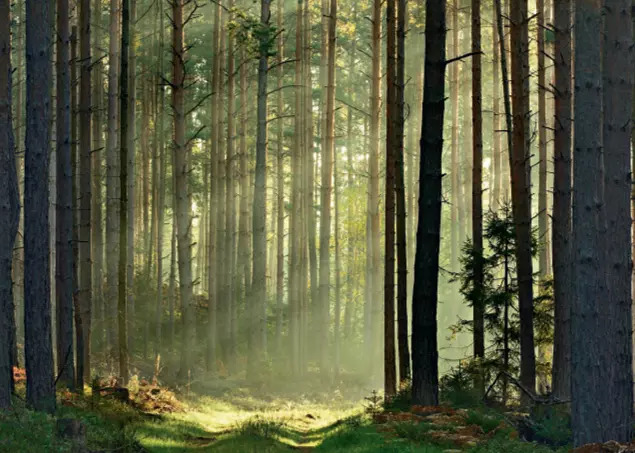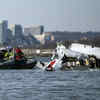‘From silver to slavery, the planetary crisis comes from the human capacity to desire — and harm’

Sunil Amrith is the Renu and Anand Dhawan Professor of History at Yale University. Speaking to Srijana Mitra Das at Times Evoke, he discusses his book ‘The Burning Earth’ — and archives planetary hurt:
What is the core argument — and hope — of ‘The Burning Earth’?
■ The hope is making the case that environmental justice is urgent and we must reckon with the multiple stories that have brought us to this point. The United Nations calls this a ‘triple planetary crisis’ — we are not only in a climate crisis but also biodiversity and health.
To know how we got here, we need to put together two stories. One is a very long-term one, a struggle for human freedom in the most elemental sense — this is the freedom to live, to have enough beyond bare survival, to be able to imagine a future. All that demanded some environmental control. But there is also a very different story of the wanton, irreversible environmental destruction seen over the last few hundred years — that is driven by ‘freedom’ becoming domination. The planetary crisis is the cumulative outcome of all our desires and ambitions, with the vastly disproportionate effect a minority had in pushing the most environmental harms.
 HOW IT STARTED —AND HOW IT’S GOING: Earth is over 4.5 billion years old — humans are just 7 million years old, younger than mushrooms, trees and snails, but the planet's youngest species have changed its physiology (Photos: Getty Images and iStock)
HOW IT STARTED —AND HOW IT’S GOING: Earth is over 4.5 billion years old — humans are just 7 million years old, younger than mushrooms, trees and snails, but the planet's youngest species have changed its physiology (Photos: Getty Images and iStock)
Why did the second idea spread unequally? Why didn’t India or China, for instance, conduct global exploration and then, exploitation like European societies?
■ One of the fundamental conditions for that worldview to develop is to see nature and other people as something to be conquered. This also involves a capacity to destroy — the ability to cause harm is at its centre. The gulf that opens between different societies, in their ability to inflict destruction on other people, animals and nature, is what emboldens the sense that anything is possible. The portable firearm plays a pivotal role here — these were fundamental over the last 500 years in situations where the capacity of Europeans to inflict destruction was greater than those of the societies they sought to conquer.
 (Photos: Getty Images and iStock)
(Photos: Getty Images and iStock)
Why is growing rice in China centuries ago an important point here?
■ It’s a remarkable story — one strain of rice from central Vietnam called ‘champa’ revolutionised the possibility of sustaining human communities. Champa rice is very fast-ripening and through the intervention of the Chinese emperor in the 11th century CE, around 1,000 years ago, it spread through southern China. It transformed China’s demography — for the first time, the bulk of the Chinese population lived in the south, not the north. This literally changed the world because it allowed huge economic flourishing, making China the very heart of the global economy. It was for access to Chinese markets that the Europeans embarked on all their adventures.
 IRON MEN? Migrants labouring for ore (Photos: Getty Images and iStock)
IRON MEN? Migrants labouring for ore (Photos: Getty Images and iStock)
Did other commodities also became pivotal in Earth’s transformation?
■ I emphasise sugar — arguably, no crop has done more harm to the environment or human welfare. Sugar brought many transformations, including the plantation, a distinctive kind of agriculture all about maxim ising one particular crop’s yield as quickly as possible, regardless of the consequences — what allowed this was unfree labour. So, even before enslaved African labour, on the island of Madeira in the Atlantic, which they burned to make plantations, the Portuguese began using local enslaved labour.
Alongside, there were silver and gold. I write about silver mining in Porto Si which generated a significant amount of all the silver in the world — at inhuman cost to labourers. This is when mercury started being used in extracting silver and there’s archaeological evidence of how devastating this was to workers. It also left a wasteland on the landscape — and it began the glo bal economy because a third of this silver ended up in China, shipped on galleons from Acapulco to Manila from the 16th to the 19th century. This is what the Europeans used to get into Chinese markets. Eventually, they didn’t want to sell silver anymore — so, they started using Indian opium to access China.
 IT’S OUR WORLD TOO: Humans treat our co-species mostly as beasts of burden (Photos: Getty Images and iStock)
IT’S OUR WORLD TOO: Humans treat our co-species mostly as beasts of burden (Photos: Getty Images and iStock)
How does the idea of human freedom evolve as nature’s exploitation thus grew?
■ Both are twinned processes — you see them coming together with the first Iberian conquests in the Americas. The language used to describe the indigenous people slaughtered there was that they were ‘not fully human’. There is a de humanisation of some, which further emboldens the idea that white Christian European men have transcended their animal origins — and now, they sit above it all. That pattern is repeated in other places — the most intensive environmental harm goes with the greatest human exploitation.
A book by Gabrielle Hecht on South Africa says you can see apartheid from space. South Africa’s gold mining industry, exploiting migrant African labour, began in the 19th century. Those mine dumps are still visible around Johannesburg — you can see the seam of the gold mine of the Witwatersrand from space. It has completely shaped that city and the toxicity of its groundwater into which mine waste still leaches 140 years later.

You link ecocide with genocide — can you elaborate?
■ The term ‘ecocide’ first came into use in 1970. A Yale University plant biologist, Arthur Galston, coined it, commenting on the US military in Vietnam. America was using Agent Orange, with devastating impacts on human health and the environment, twinning genocide with environmental destruction. We can see many iterations in the 20th century, like the Brazilian state’s persecution of indigenous people accompanying mass deforestation in the Amazon rainforest.
Why is war discussed so little as a shaper of our environment?
■ War has an outsize impact in making this planetary crisis. Consider the two World Wars — first, they brought home the sheer power and capacity of human beings to cause destruction. Second, they fundamentally altered the human imagination — when World War I began, David Lloyd George, then British Minister for Munitions, likened it to a natural disaster, using metaphors like an earthquake or cyclone. Then, it seemed like only the power of nature could describe such destruction — by the end of the war, that had completely changed. The Norwegian meteorologist Vilhelm Bjerknes made a breakthrough discovery in climate science of ‘Polar fronts’ — a metaphor he drew directly from the trenches of war. It’s as if, after WWI, only the metaphors of human armies could help us understand natural forces. The wars caused a fundamental imaginative transformation of how much power humans could wield.
 BIG BANG: The arms industry hurts Earth (Photos: Getty Images and iStock)
BIG BANG: The arms industry hurts Earth (Photos: Getty Images and iStock)
What role do non-human animals play in this history?
■ Until the 20th century, animals were pivotal to human capacities to do anything. I write of how one in four horses in the world were in the Mongol army — without them, the Mongols couldn’t have created one of the largest con tiguous empires ever. Animals remain central to the human capacity to produce food — yet, that’s accompanied by a story starting in the 18th century of mass destructions. Bison in North America went from 40 million to extinction in a few decades. It’s now estimated we humans kill more than a billion animals a year — our dependence on animals goes together with a level of violence and destruction to which we have become totally desensitised.
 (Photos: Getty Images and iStock)
(Photos: Getty Images and iStock)
What is the core argument — and hope — of ‘The Burning Earth’?
■ The hope is making the case that environmental justice is urgent and we must reckon with the multiple stories that have brought us to this point. The United Nations calls this a ‘triple planetary crisis’ — we are not only in a climate crisis but also biodiversity and health.
To know how we got here, we need to put together two stories. One is a very long-term one, a struggle for human freedom in the most elemental sense — this is the freedom to live, to have enough beyond bare survival, to be able to imagine a future. All that demanded some environmental control. But there is also a very different story of the wanton, irreversible environmental destruction seen over the last few hundred years — that is driven by ‘freedom’ becoming domination. The planetary crisis is the cumulative outcome of all our desires and ambitions, with the vastly disproportionate effect a minority had in pushing the most environmental harms.

Why did the second idea spread unequally? Why didn’t India or China, for instance, conduct global exploration and then, exploitation like European societies?
■ One of the fundamental conditions for that worldview to develop is to see nature and other people as something to be conquered. This also involves a capacity to destroy — the ability to cause harm is at its centre. The gulf that opens between different societies, in their ability to inflict destruction on other people, animals and nature, is what emboldens the sense that anything is possible. The portable firearm plays a pivotal role here — these were fundamental over the last 500 years in situations where the capacity of Europeans to inflict destruction was greater than those of the societies they sought to conquer.

Why is growing rice in China centuries ago an important point here?
■ It’s a remarkable story — one strain of rice from central Vietnam called ‘champa’ revolutionised the possibility of sustaining human communities. Champa rice is very fast-ripening and through the intervention of the Chinese emperor in the 11th century CE, around 1,000 years ago, it spread through southern China. It transformed China’s demography — for the first time, the bulk of the Chinese population lived in the south, not the north. This literally changed the world because it allowed huge economic flourishing, making China the very heart of the global economy. It was for access to Chinese markets that the Europeans embarked on all their adventures.

Did other commodities also became pivotal in Earth’s transformation?
■ I emphasise sugar — arguably, no crop has done more harm to the environment or human welfare. Sugar brought many transformations, including the plantation, a distinctive kind of agriculture all about maxim ising one particular crop’s yield as quickly as possible, regardless of the consequences — what allowed this was unfree labour. So, even before enslaved African labour, on the island of Madeira in the Atlantic, which they burned to make plantations, the Portuguese began using local enslaved labour.
Alongside, there were silver and gold. I write about silver mining in Porto Si which generated a significant amount of all the silver in the world — at inhuman cost to labourers. This is when mercury started being used in extracting silver and there’s archaeological evidence of how devastating this was to workers. It also left a wasteland on the landscape — and it began the glo bal economy because a third of this silver ended up in China, shipped on galleons from Acapulco to Manila from the 16th to the 19th century. This is what the Europeans used to get into Chinese markets. Eventually, they didn’t want to sell silver anymore — so, they started using Indian opium to access China.

How does the idea of human freedom evolve as nature’s exploitation thus grew?
■ Both are twinned processes — you see them coming together with the first Iberian conquests in the Americas. The language used to describe the indigenous people slaughtered there was that they were ‘not fully human’. There is a de humanisation of some, which further emboldens the idea that white Christian European men have transcended their animal origins — and now, they sit above it all. That pattern is repeated in other places — the most intensive environmental harm goes with the greatest human exploitation.
A book by Gabrielle Hecht on South Africa says you can see apartheid from space. South Africa’s gold mining industry, exploiting migrant African labour, began in the 19th century. Those mine dumps are still visible around Johannesburg — you can see the seam of the gold mine of the Witwatersrand from space. It has completely shaped that city and the toxicity of its groundwater into which mine waste still leaches 140 years later.

You link ecocide with genocide — can you elaborate?
■ The term ‘ecocide’ first came into use in 1970. A Yale University plant biologist, Arthur Galston, coined it, commenting on the US military in Vietnam. America was using Agent Orange, with devastating impacts on human health and the environment, twinning genocide with environmental destruction. We can see many iterations in the 20th century, like the Brazilian state’s persecution of indigenous people accompanying mass deforestation in the Amazon rainforest.
Why is war discussed so little as a shaper of our environment?
■ War has an outsize impact in making this planetary crisis. Consider the two World Wars — first, they brought home the sheer power and capacity of human beings to cause destruction. Second, they fundamentally altered the human imagination — when World War I began, David Lloyd George, then British Minister for Munitions, likened it to a natural disaster, using metaphors like an earthquake or cyclone. Then, it seemed like only the power of nature could describe such destruction — by the end of the war, that had completely changed. The Norwegian meteorologist Vilhelm Bjerknes made a breakthrough discovery in climate science of ‘Polar fronts’ — a metaphor he drew directly from the trenches of war. It’s as if, after WWI, only the metaphors of human armies could help us understand natural forces. The wars caused a fundamental imaginative transformation of how much power humans could wield.

What role do non-human animals play in this history?
■ Until the 20th century, animals were pivotal to human capacities to do anything. I write of how one in four horses in the world were in the Mongol army — without them, the Mongols couldn’t have created one of the largest con tiguous empires ever. Animals remain central to the human capacity to produce food — yet, that’s accompanied by a story starting in the 18th century of mass destructions. Bison in North America went from 40 million to extinction in a few decades. It’s now estimated we humans kill more than a billion animals a year — our dependence on animals goes together with a level of violence and destruction to which we have become totally desensitised.

Download
The Times of India News App for Latest India News
Subscribe
Start Your Daily Mornings with Times of India Newspaper! Order Now











All Comments ()+^ Back to Top
Refrain from posting comments that are obscene, defamatory or inflammatory, and do not indulge in personal attacks, name calling or inciting hatred against any community. Help us delete comments that do not follow these guidelines by marking them offensive. Let's work together to keep the conversation civil.
HIDE